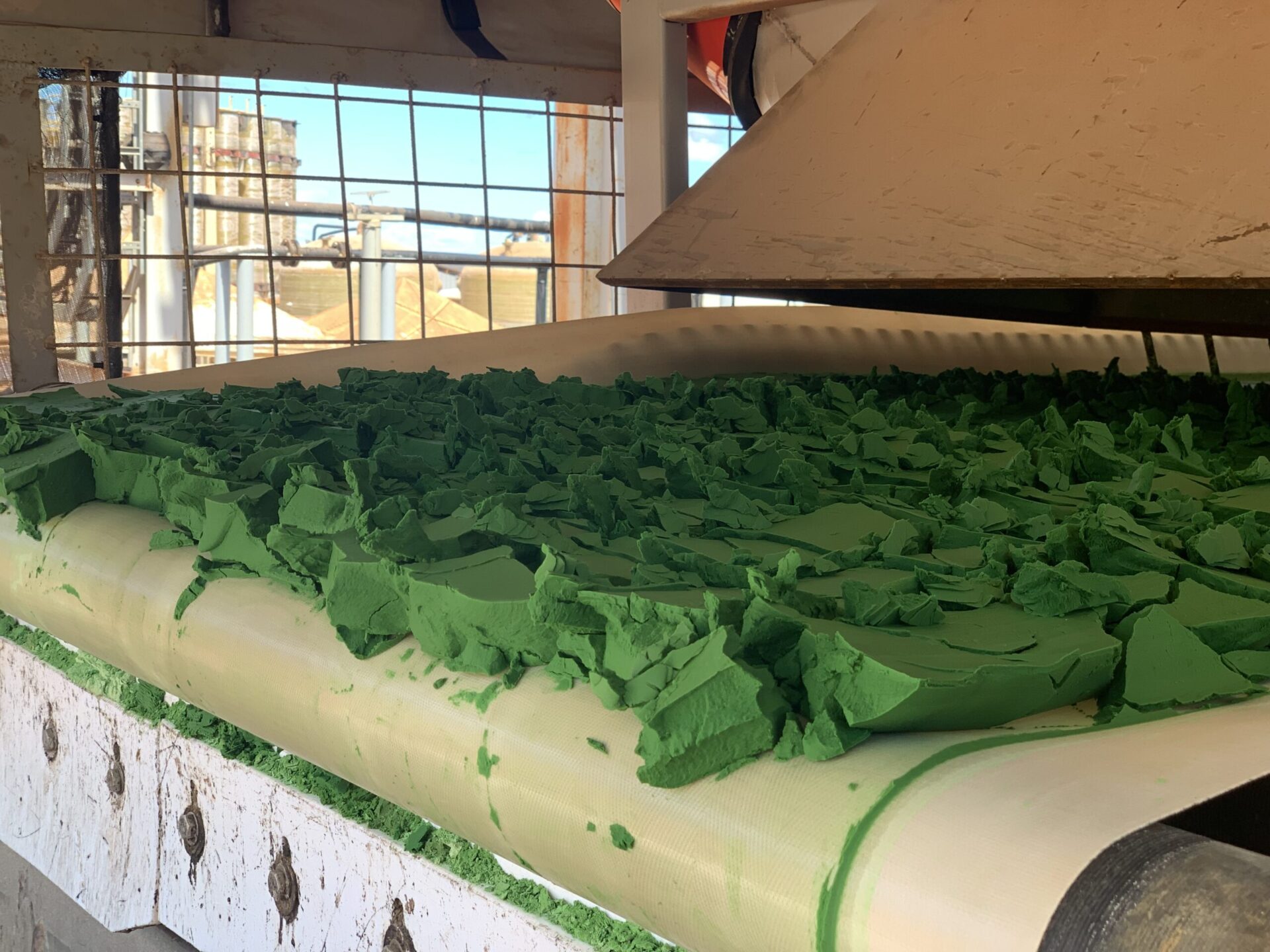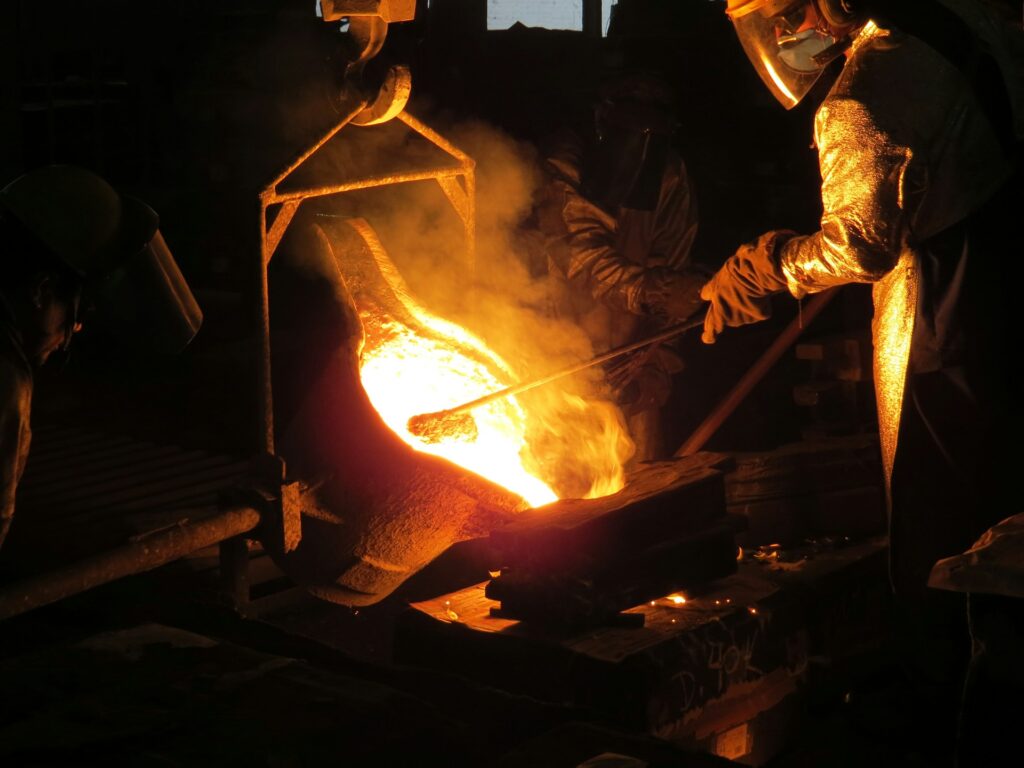What Is Brazilian Nickel, and Why Heap Leaching?
Brazilian Nickel is developing the Piauí Nickel Project in northeastern Brazil with the aim of becoming one of world’s major producers of nickel to supply the growing electric vehicle battery market and provide an alternative to existing global supply chains that are controlled by just a few countries.
The Piauí project has reserves of 104 million tonnes at 0.82% nickel and 0.05% cobalt, with upside potential in adjacent exploration licences. We expect peak production to reach more than 34,000t Nickel and 1050t cobalt and average, over the first 10 years of the operation, 25,000 tonnes per year of contained nickel. Further Brazilian Nickel has received all the necessary installation licenses, meaning it can proceed quickly with construction once financing finalized.
Brazilian Nickel chose to use heap leaching for all the processing at the Piauí project because of its long list of environmental and economic advantages. Heap leaching has the potential to be the lowest capital and operating cost and most environmentally friendly of the processes to recover nickel from laterite ores. It is a low-CO2 process that uses water efficiently and only produces solid residues, which eliminates the need for an environmentally risky tailings dam. Importantly, it is also a more simple, flexible process and thus is very suitable for remote locations and training of local workforces to operate.
Although heap leaching has not been used for nickel laterite processing on this scale before, it is not an untried or experimental technology. Heap leaching is well established process used for the treatment of copper, gold and uranium. Work first began on nickel laterite heap leaching in the 1990s and the core BRN metallurgical team has been working to commercialise it on a large scale since the early 2000s.
Many aspects of heap leaching technology used for other metals are transferable to nickel laterite processing, though it takes a high degree of expertise. Our metallurgical experts have optimized the process over the years to suit the many deposits studied. The key to heap leaching of nickel laterites is actually iron control and our optimized process does exactly that.
Iron is an impurity in the ore in varying degrees of concentration in different deposits and BRN’s heap leach process minimizes the amount going into solution, basically selectively leaching nickel over the iron. This results in a pregnant leach solution (PLS) with the highest nickel and the lowest iron and acid concentration resulting in a smaller more efficient downstream treatment plant.,.
Since purchasing the Piauí project in 2014 BRN has further demonstrated and improved the process specifically to the conditions at Piauí. The company operated a demonstration plant on the Piauí site with full height heaps in 2016 & 2017, producing nickel and cobalt products that were exported and sold. In 2021 the demonstration plant was expanded to form the PNP1000, a small-scale operation that ran until the end of 2023, producing nickel and cobalt contained in a Mixed Hydroxide Precipitate (MHP) which was fully qualified by the EV battery cathode value chain.
The ore from the Piauí Nickel Project has excellent metallurgical properties for heap leaching, being high in silica. This results in fast leach kinetics, high nickel and cobalt extractions and, most importantly, low acid consumption. This cements the project as a highly viable, low cost, and low impact method of providing a vital resource for the green economy.
In short, nickel laterite heap leaching is simple and flexible, economically sound and environmentally responsible, and can be applied to the many laterite deposits that currently have no realistic path to production.
Fundamentals of Heap Leaching
In the heap leaching process, very dilute sulfuric acid (similar in strength to some acid‐based household cleaning products) is slowly applied to crushed and agglomerated nickel ore on a lined pad to dissolve the nickel and cobalt contained in the ore. The resulting metal-rich solution is then treated in an ambient temperature and pressure process to firstly remove impurities by precipitation with limestone and then to recover the valuable nickel and cobalt from solution. This is done with a combination of ion exchange circuits and further precipitation to MHP.
Solutions are continuously recycled, reducing waste and making the process more sustainable.
The final product is an intermediate mixed hydroxide precipitate (MHP) containing ~50% nickel and ~2% cobalt that can then be sold to a large customer base of existing nickel refiners along with the newer EV battery precursor and Cathode Active Material (CAM) producers.
While Brazilian Nickel believes that any nickel laterite is amenable to heap leaching, factors including terrain, weather and distance to ports are crucial in developing a commercially successful project.
Technical Advantages vs. Alternatives Of Heap Leaching
Heap Leaching has much better resource utilization than other processes that treat nickel laterites. Once selected as ore, material is stockpiled and reclaimed to give the right homogeneous mix in the heap. Nickel extraction in the Piauí project is above 80% and downstream losses less than 5% giving a range of global recovery of 76-82%.
Smelting and high-pressure acid leaching (HPAL) typically have recoveries from the target ore zone of 85% to 95%, however these processes have a very specific target ore and therefore total resource recovery is normally in the range of 45% to 60%.
HPAL, currently the hydrometallurgical process of choice for nickel laterites outside of China, uses elevated temperatures (around 255°C) and pressures (around 50 bars) along with sulfuric acid to extract nickel and cobalt from laterite ore. This is much more energy intensive and capital intensive than heap leaching and involves more complex
Most other pyrometallurgical processes, notably ferronickel, nickel pig iron and matte smelting, require a high-energy-intensity smelting process. While HPAL has a lower energy intensity than smelting, estimates suggest that for every tonne of nickel ore processed via HPAL, around 1.5 tonnes of waste is also produced. Typically
Environmental & Sustainability Considerations Of Heap Leaching
Sustainability is a core value at Brazilian Nickel. The Brazilian state is also very focused on environmental issues in mining, and rightly so, given some of the major disasters at mining operations in the past.
In addition to having only dry residues the heap leach process is inherently lower CO2 than other laterite processes. We also have active research programs to capture and reduce what CO2 we do emit with the aim of zero carbon production in the future.
The Piauí Nickel full-scale Project will have an on-site acid plant as part of the operation. This means sulphur is transported to the site rather than more dangerous acid shipments. The sulphur burning acid plant cogenerates more than enough electricity to operate the HL operation and usually allows some sale of power back to the country’s grid.
Heap leaching also bypasses the need for fine milling, reducing energy consumption and environmental impact. Furthermore, the process can be applied to low-grade ores that are not economically viable using conventional techniques.
Sustainability is also about what we leave behind. Our objective is to leave behind a positive legacy of stronger, more sustainable communities once mining activities cease. This involves planning and community buy in before, during and after the period of actual mining. I think we’re doing a pretty good job of it, Brazilian Nickel’s Piauí Nickel Metais unit, which operates the Piauí site was awarded the prestigious Nickel Mark award for its unwavering commitment to responsible and sustainable practices across the nickel value chain. While this gives us confidence that we’re on the right track, we are always looking for ways to do more.

Anne is the co-founder of Brazilian Nickel a company with sustainability and ethical principles at the forefront of its Agenda. Its flagship Piauí Nickel Project is a nickel heap leach which produced its first intermediate products in 2022. Heap leaching is a low cost and inherently low carbon footprint process and BRN is looking at innovative ways to reduce the project carbon footprint even further with the vision of being carbon negative The Piauí site was awarded the Nickel Mark in May 2024. BRN is a member of the Nickel Institute (the global association of leading primary nickel producers) and in 2025 Anne became Chair of its Board of Directors.
In 2022 Anne was named one of the 25 inaugural ESG champions by the Natural Resources Forum particularly for her work on gender diversity and inclusivity in the mining sector.
Anne is a Chartered Metallurgical Engineer from the Royal School of Mines, Imperial College London. She has over 30 years’ experience in the natural resource sector and has been working in nickel and cobalt since 2003. She is also a scientific associate of the Natural History Museum in London were she continues to contribute to fundamental nickel and cobalt research.


